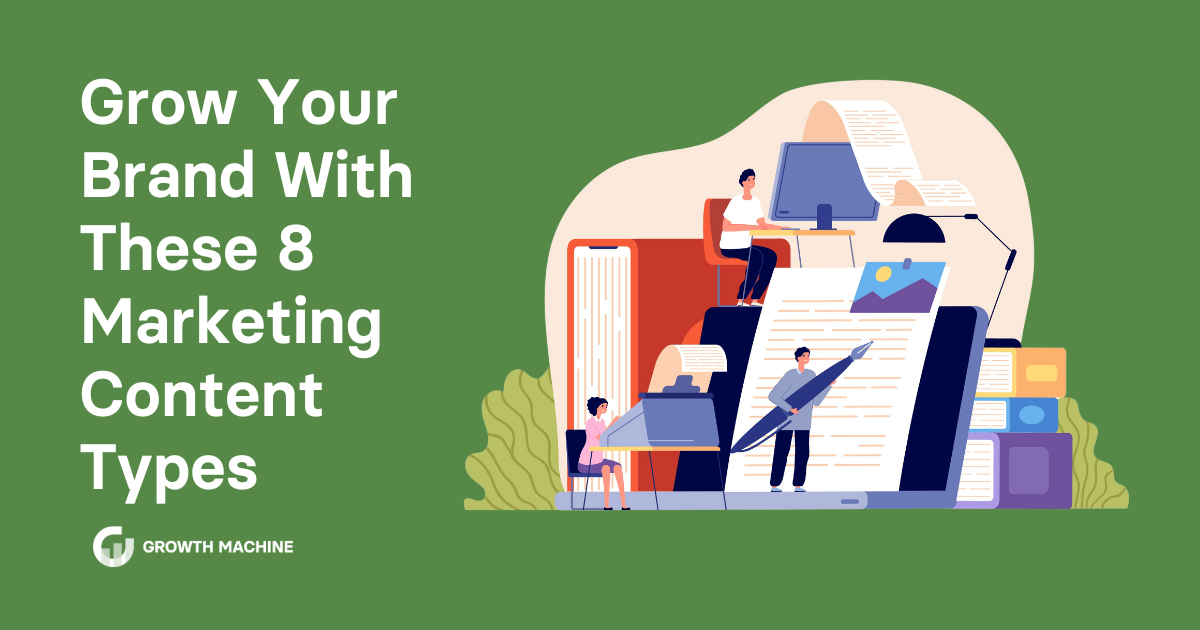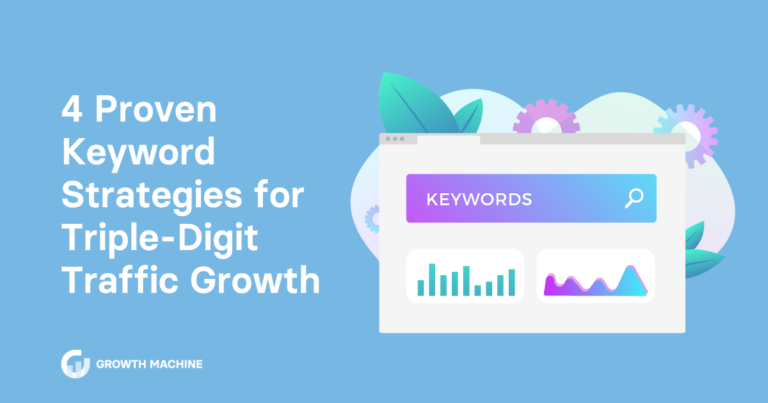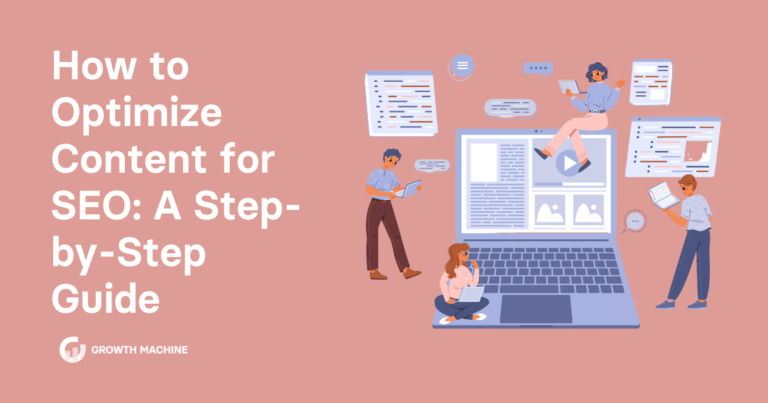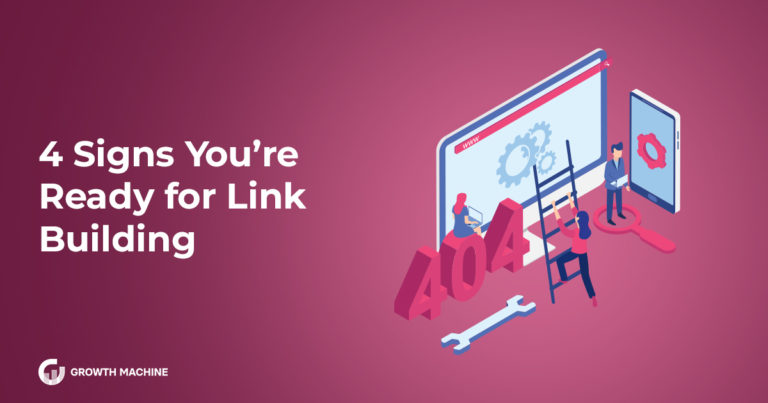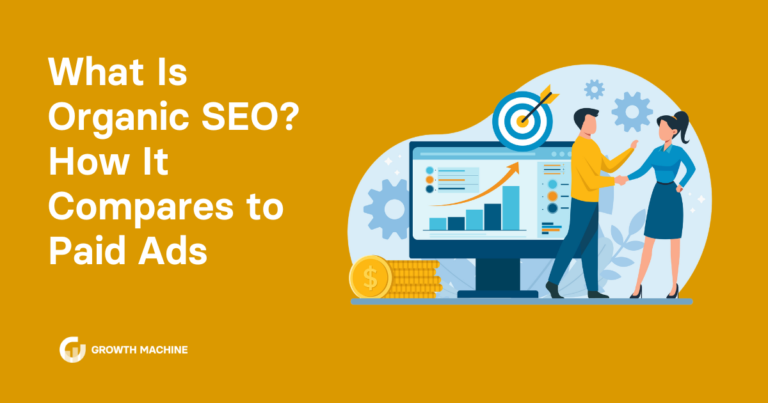Grow Your Brand With These 8 Marketing Content Types
People are inundated with content these days, making it difficult to capture attention. But you must break through the barrage of content to build trust, recognition, and positive sentiment for your brand. The end goal of your content marketing efforts, of course, is that your brand becomes the definitive choice when a consumer is ready to buy.
It’s possible to make this happen. Create consistent, quality content in multiple formats across multiple platforms and you will increase brand awareness, growing a following for your brand.
8 Marketing Content Types
Different types of content are more effective at different stages of the marketing funnel. For instance, a social media post garners initial attention in the awareness stage, while an in-depth case study or thought leadership piece convinces the consumer to buy later, in the consideration stage.
There are multiple touchpoints in the consumer journey, i.e., multiple instances in which consumers interact with your brand on different platforms. For instance, they might see one of your videos while browsing YouTube or be sent an infographic of yours by a colleague. You must take all opportunities to grab attention, engage consumers, stand out, and be memorable by creating great content.
These are the eight best types of content your business should be consider.
1. SEO Content
When you optimize your blog content properly, you can achieve higher rankings on the search engine results page (SERP). Organic search remains the biggest source of website traffic, so ignoring search engine optimization (SEO) is giving away a majority of your potential traffic. Higher rankings mean greater brand awareness, more visitors, and more chances to convert.
To optimize blog content for SEO, perform keyword research to find the terms and phrases your target audience searches for most. Use top-performing keywords in your headlines and integrate semantically related keywords within blog content to increase traffic.
Organize content into topic clusters to ensure you cover the key topics comprehensively and prove to Google that your brand is the go-to resource with the most valuable information in your niche.
If this all sounds like too much, Growth Machine can handle all of this for you so you can focus on other content streams.
2. Social Media
Social media content comprises a range of written content, visual content, and video posts. Content creation even extends to shoppable posts, quizzes, augmented reality experiences, and more.
Social media platforms are incredibly useful for growing a brand due to their immense reach. Around 4.7 billion people around the world use social media, with an average of 2 hours and 29 minutes spent on socials each day.
Get the most from social media by establishing where your target audience specifically spends its time. Set up a consistent publishing schedule. Be authentic to your brand, engage followers with user-generated content, and use content that aligns with the platform in question.
3. Webinars
A webinar is an educational resource in the form of an online seminar, often at a set date and time. You can repurpose webinar recordings as video content so you’re not starting from scratch.
Webinars are useful for encouraging positive associations with your brand as webinars are seen as high-quality, valuable content that actually helps people achieve something.
So, address an audience pain point with your webinar. And be sure to have a conversion goal in mind from the outset. Frame your product as the best solution to the pain point, without being too sales-heavy.
4. Infographics
An infographic is a visual representation of data in graphic form. They present one of the best ways to build links back to your website. The number of backlinks you have is a top ranking factor for Google.
Infographics are massively shareable and link-worthy. Make it easy for other content creators to do this by keeping your infographics simple and splitting them into blocks that bloggers may want to embed within their content.
The best infographics tell a story. Keep it simple and don’t overwhelm viewers with too much data or they won’t remember anything of note.
For a solid promotion strategy, reach out to relevant, high-authority content creators, influencers, and bloggers in your niche to let them know your infographic is available for use, with a backlink in return.
5. White Papers
Most common in a B2B content marketing strategy, a white paper is a piece of downloadable long-form content akin to a research paper.
As they’re so comprehensive and useful to your audience they demonstrate your brand’s expertise. Lay out your innovative ideas and solutions to industry problems to establish your brand as a thought leader.
You may also want to use the content within your white paper to frame your product or service as the answer to a potential client’s pain points. For example, you can argue the need for AI in HR communications and at the end, pose your product as the solution.
6. Case Studies
Case studies are accounts of entrepreneurial or customer success stories, detailing the steps taken and results achieved. They’re useful for capturing audience attention, with potential customers hoping to achieve similar results.
Case studies even have the potential for virality if the results are particularly impressive. Plus, they make good supporting evidence for other creators’ content and are thus very linkable. Most importantly, showing you’re able to achieve results with the work you do builds trust in your brand.
Establishing the objective of the case study is important. Choose challenges that will appeal to audience needs and desires to make them compelled to read. Use awe-inspiring, data-driven headlines to drive inbound traffic.
Repurpose case study content as part of your wider digital marketing strategy. Use them as the basis for guest posts, create an infographic out of the data, or post compelling snippets to social media.
7. Podcasts
Podcasts are an increasingly popular but not yet saturated channel, which is the content marketer’s dream. Your podcast has a real chance of standing out.
People love podcasts because they’re entertaining, engaging, and easy to consume. They have a wide reach. Distribute your podcast across multiple channels such as Audible, Spotify, Apple Podcasts, and so on. Also, publish your podcast on your blog with the transcript as a written piece of content, which is great for SEO purposes.
8. Video Content
From short, eye-catching social media videos to lengthier product explainers, there are a bunch of ways to do video marketing. What makes videos great is their ongoing popularity — just look at the explosion of TikTok.
Video content has the unique ability to humanize your brand as it’s so relatable and appealing to new audiences. Plus it has reach in ways you may not have even thought of with Google now showing videos on the search engine results pages.
There are multiple types of video content to meet different marketing goals and to suit different marketing campaigns. For example, you might send a customer testimonial video out as part of your email marketing strategy but post a less serious, short video on social media to announce a new product release.
Incorporate These Different Types of Content Marketing Into Your Strategy
You may not necessarily implement every single type of content you learn about. But it’s worth experimenting with different forms of content to increase brand awareness and reach potential customers across different marketing channels and in different stages of the customer journey.
Choose three or four types of content that make sense for your brand then see how well they perform in terms of the audience response and what your analytics data shows.
Chat with us if you need help deciding which types of content would be the best fit for your brand. At Growth Machine, we’ve managed the SEO content strategy for Fortune 500 companies and growing startups alike, so your brand will be in good hands.

